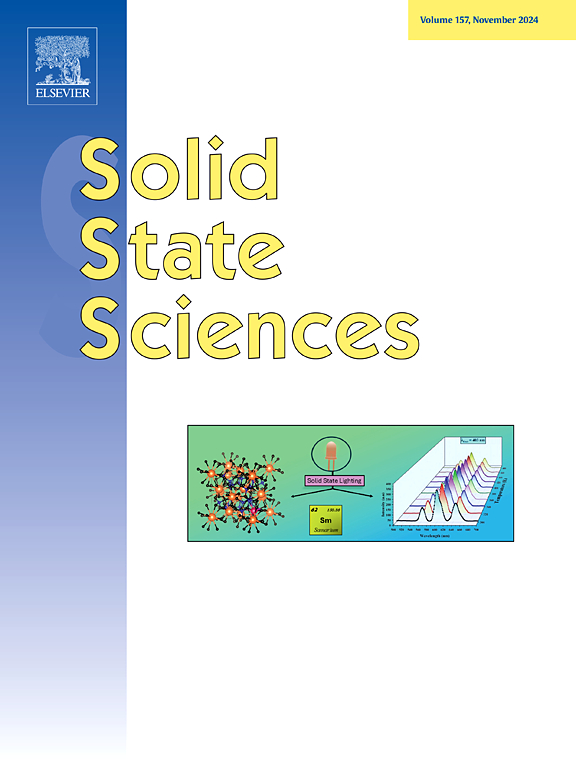Phase formation under hydrothermal conditions and thermodynamics properties in the GdPO4-YPO4 system
IF 3.4
3区 化学
Q2 CHEMISTRY, INORGANIC & NUCLEAR
引用次数: 0
Abstract
Phase formation in the GdPO4-YPO4 system has been studied. The samples were synthesized under hydrothermal conditions at a temperature of 503 K and a pressure of approximately 10 MPa for 28 days of isothermal holding. The results of thermal treatment of the obtained samples at 1473 and 1673 K and the results of thermal treatment of GdPO4 at 1873 K are presented. It is shown that in the system, solid solutions Gd1-xYxPO4 are formed based on phases with monoclinic structure GdPO4 and xenotime structure YPO4. The range of existence of two solid solutions at temperatures 503–1473 K lies in the range of compositions from x≈0.20 to x≈0.40. At a temperature of 1673 K, the formation of a phase with anhydrite structure is observed at x≈0.26, and the beginning of transformation of GdPO4 from monoclinic to xenotime structure. Using Knudsen effusion mass spectrometry (KEMS), the qualitative and quantitative composition of the vapor over the (1-x)GdPO4-xYPO4 system has been determined, which consists of a mixture of PO, PO2, and O2. The enthalpy value of the vaporization reaction and the standard formation enthalpies for the GdPO4 and YPO4, as well as the activity of P4O10 in the condensed phase of the (1-x)GdPO4-xYPO4 system, were determined in the temperature range 1650–1850 K.

热液条件下GdPO4-YPO4体系的相形成及热力学性质
研究了GdPO4-YPO4体系的相形成。样品在水热条件下合成,温度为503 K,压力约为10 MPa,等温保温28天。给出了所得样品在1473和1673 K下的热处理结果以及GdPO4在1873 K下的热处理结果。结果表明,体系中形成了单斜晶型GdPO4和异时晶型YPO4相的固溶体Gd1-xYxPO4。在503 ~ 1473 K温度下,两种固溶体的存在范围为x≈0.20 ~ x≈0.40。在1673 K温度下,x≈0.26处形成硬石膏结构相,GdPO4开始由单斜晶向xenotime晶型转变。利用Knudsen渗出质谱法(KEMS)测定了(1-x)GdPO4-xYPO4体系上蒸汽的定性和定量组成,该体系由PO、PO2和O2组成。在1650 ~ 1850 K的温度范围内,测定了GdPO4和YPO4的蒸发焓值、标准生成焓以及(1-x)GdPO4- xypo4体系中P4O10的缩合相活度。
本文章由计算机程序翻译,如有差异,请以英文原文为准。
求助全文
约1分钟内获得全文
求助全文
来源期刊

Solid State Sciences
化学-无机化学与核化学
CiteScore
6.60
自引率
2.90%
发文量
214
审稿时长
27 days
期刊介绍:
Solid State Sciences is the journal for researchers from the broad solid state chemistry and physics community. It publishes key articles on all aspects of solid state synthesis, structure-property relationships, theory and functionalities, in relation with experiments.
Key topics for stand-alone papers and special issues:
-Novel ways of synthesis, inorganic functional materials, including porous and glassy materials, hybrid organic-inorganic compounds and nanomaterials
-Physical properties, emphasizing but not limited to the electrical, magnetical and optical features
-Materials related to information technology and energy and environmental sciences.
The journal publishes feature articles from experts in the field upon invitation.
Solid State Sciences - your gateway to energy-related materials.
 求助内容:
求助内容: 应助结果提醒方式:
应助结果提醒方式:


